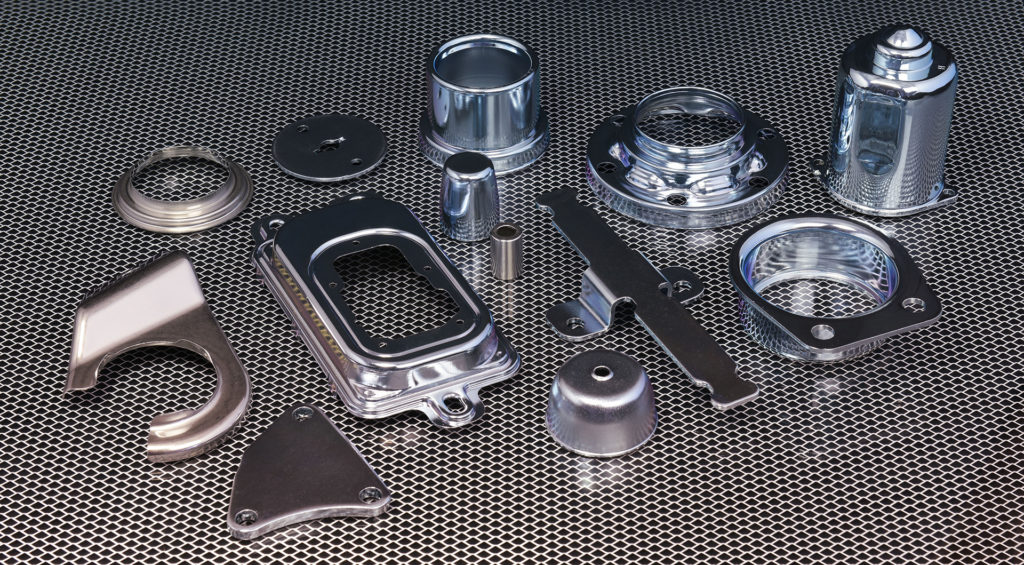Could changing to metal pressings really solve your problems?
Whoever said, ‘A change is as good as a rest’, may have been on to something, but is change really so compelling? We are often told of the benefits of changing things. It may be our gas or electricity supplier or our mobile phone contract. Change is not always that easy, there can be risks involved, and it is the same in business.
Companies who approach Brigham for design input are often keen to explore change and the benefits it can bring. It may be product designers are seeking to reduce assembly weight, cut lead-time, improve durability, or simply reduce cost. Switching the manufacturing process of an existing component from a casting or a forging could achieve all these things.
The Benefits of Metal Pressings
A metal pressing can make a highly effective alternative to an existing cast, forged, turned or fabricated part. It can even provide an alternative to a component which is already pressed, if the part can be engineered differently to achieve a better result.
A common customer objective is to reduce a product’s dynamic weight, which can be particularly advantageous for component assemblies in the automotive sector. A pressing can easily provide a lighter alternative to a heavy cast component.
Another requirement, which has been key for several customers, is time. Maybe, the lead-time of an existing component is proving to be troublesome. The process of manufacturing a cast component can be a time consuming and labour-intensive process. When volumes are high and deadlines are tight, this can make the casting route unviable, and the option of metal pressing more appealing.
Pressing a component can also improve product strength and durability. With the introduction of an array of new metal alloys to the market, a pressed metal component can rival many other manufacturing methods, providing immense resilience, even when material gauge is reduced.
In addition to all the above, is the matter of cost, which any purchasing manager would agree is important. This is quite an easy one. Metal pressings are cheaper. Manufacturing a metal pressing requires less handling, less material, and less time, so it costs less money. Not only that, but pressings also offer high levels of repeatability, leading to high levels of predictability and quality. This predictability is reflected in high delivery performance, converting cost savings into invaluable, increased value.
How?
When assessing whether your component can alternatively be manufactured as a metal pressing, there are a few things to consider,
The first thing to look at is if there are any component features which would rule out the pressing method from the start. This can be the case if, for example, the component walls are required to be different thicknesses. Then again, subject to function, actual gauge reduction and the feasibility to either post machine certain areas or maintain material stock thickness, a pressed and machined solution should not be ruled out as a cost-efficient route.
If there are no such obstacles, then the chances are that we can press it. The next thing to consider is how the existing design would need to be altered to accommodate the pressing method without compromising functionality. There may also be additional connecting parts, which work with the original component within an assembly, which may also require a re-design to maintain compatibility.
This is where we can help. Our design engineers like to get stuck in with your project designers at this stage; thrashing out ideas and working through the issues to reach a solution. Our team will then propose options for review and continue to work with you until revised component drawings are submitted for your approval.
At this stage, computer aided simulation can also be used to establish manufacturing feasibility. This technique provides a cost effective and time efficient alternative to physical production trials. The results are collated and presented to you for acceptance before prototype production commences.
Success
Brigham presswork has amassed 75 years in the industry, giving us almost unrivalled experience. We use and share our skills and knowledge in metal pressings to create real value for our customers.
Brigham’s design team successfully re-designed a troublesome and costly cast component into a metal pressing. This resulted in a 70%-unit cost reduction, reduced component weight and improved strength & durability for our customer. This re-engineered component is now part of an assembly rolled out across the automotive OEM’s entire vehicle platform.
Switching to metal pressings can have real advantages. It may be an option that you hadn’t really considered before, but if the design input is right, then the results can speak for themselves.

